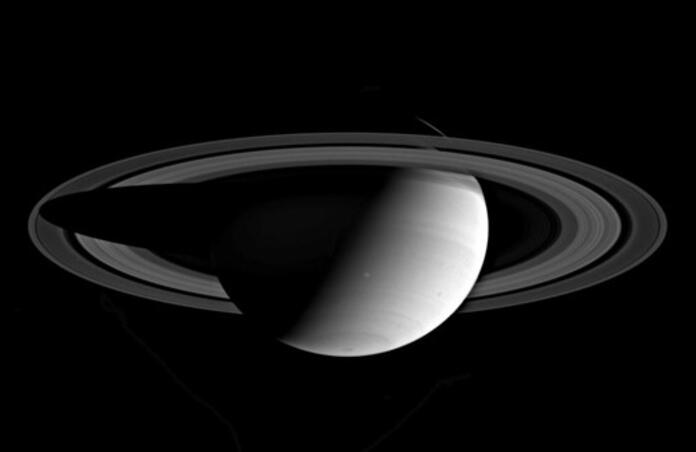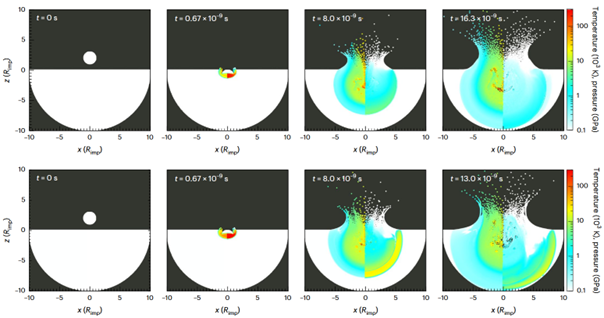Saturn’s Rings May be Much Older Than we Thought

Relative to solar-system timescales, Saturn’s rings are believed to be quite young, estimated to be only 100–400 million years old. This estimate is based on the remarkable purity of the material composing the rings. Analysis by the Cassini spacecraft has shown that the rings are composed almost entirely of water ice. It is widely accepted that the rings originally formed from pure ice, with impurities accumulating due to micrometeoroid impacts. Saturn is quite efficient at incorporating impacting material into its rings, with an estimated 10% of the initial mass of a micrometeoroid being preserved. Over time, micrometeoroid impacts have contributed dust and rocky impurities to the rings, but the scarcity of significant contamination today has led to the conclusion that Saturn’s rings must be relatively young.
That said, new analysis led by Ryuki Hyodo presents a mechanism for accretion into ring-like structures, which demonstrates that the accretion efficiency may have been overestimated. This would mean that the rate of pollution is much lower than previously thought. Based on this efficiency model, purity alone cannot constrain the age of the rings, which may be as old as the Solar System itself.
The study presents numerical simulations of impacts between micrometeoroids, 1-100 μm across, and ring particles, 1 – 100 cm across. Their models assumed high velocity impacts of ~30 kms-1. Hyodo et al incorporate a Smoothed Particle Hydrodynamical (SPH) simulation, a technique that approximates the continuous flow of a fluid using a discrete set of particles that each carry the fluid’s local properties. While such simulations are quite computationally demanding, they are more reliable in computing surface dynamics than the alternative grid-based Eulerian approach.

The study finds identifies a that upon impact, the micrometeoroid is vaporised and causes intense shocks to propagate in the fluid. Meanwhile, only a small proportion of the ring’s mass is vaporised. The vapour quickly expands and cools, forming a mixture of both free atoms and molecules, as well as nano-scale condensed particles. Many of these particles become charged due to interactions with the magnetosphere.
The key results of their models indicate that significant portions of both the charged and neutral component will be ejected from the system. Charged particles will interact with Saturn’s magnetic field, and eventually succumb to processes such as electromagnetic drag and interactions with the atmosphere. On the other hand, neutral particles are more likely to remain bound but will still be removed due to the high-speed expansion of the vapour cloud. Overall, they find that only ~1% of the initial micrometeoroid mass will remain bound within the ring system.
This so-called pollution resistance helps preserve the initial icy structure of Saturn’s rings. The cleanliness of the rings is indicative of an efficient removal process, rather than a true indicator of age. Future research will aim to refine the current models by integrating chemical processes within the expanding vapor cloud. For example, processes like radiolysis (the breakdown of molecules due to radiation) and sputtering (the ejection of particles caused by impacts) could further influence the dynamics of the rings.
--
Journal Source: R. Hyodo et al, Pollution resistance of Saturn’s ring particles during micrometeoroid impact, Nature Geoscience, (2025), DOI:https://doi.org/10.1038/s41561-024-01598-9
Cover Image Credit: NASA/ JPL
